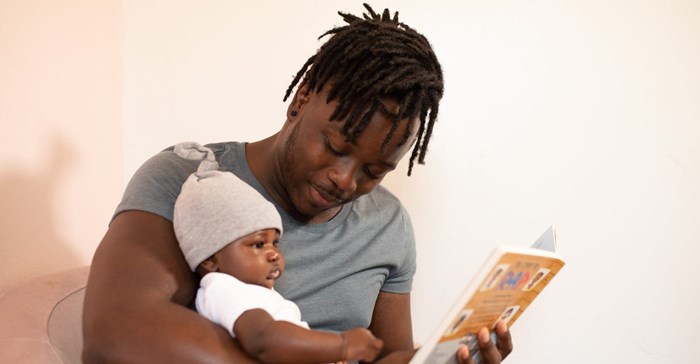The case against the Minister of Labour was initiated by Werner and Ika van Wyk as first respondents, and advocacy group Sonke Gender Justice as third respondent. The organisation Equimundo: Center for Masculinities and Social Justice was commissioned to write an expert affidavit on international good practices regarding parental leave, and it drew mainly on the criteria of good leave policies set out in the MenCare Parental Leave Platform for the affidavit.
The Van Wyk couple laid the case after Werner van Wyk was not able to take sufficient leave to care for their baby. His wife Ika, who is the chief executive officer of her own company, had to take leave and her business suffered as a consequence. The couple argued the 10 days of parental leave made available for fathers was insufficient and discriminatory.
This is a groundbreaking judgement in Africa, since no other African country offers shared parental leave.
South Africa is leading the continent in joining the trend of countries worldwide to offer more parental leave to fathers. The percentage of countries offering paid leave to fathers for one day or more has increased dramatically over the last 30 years, from 25% in 1995 to 63% in 2022.
While this judgement is a significant milestone in the country’s family and parental rights, it also highlights the pressing need for further reforms.
The Johannesburg High Court judgement is an interim remedy. It provides lawmakers with a two-year window to refine and develop the law.
Crucially, the judgement avoids specifying marital or relationship status. It allows adoptive and separated parents to share care-giving responsibilities.
Adoptive parents, same rights
Adoptive parents now enjoy the same leave rights as biological parents. The previous leave for adoptive parents was only 10 weeks.
The most significant advance in this judgement is that fathers can now take a portion of up to four months of parental leave, provided they reach an agreement with the mother. The consequence is that mothers can return to work if fathers assume childcare responsibilities.
There’s still work to do
While this judgment represents a monumental shift in policy, the following issues must be addressed to increase the likelihood that men take parental leave and that care-giving responsibilities are shared equally:
Insufficient time: The International Labour Organization (ILO) recommends a minimum of 14 weeks of maternity leave. The judgment states that 16 weeks can be shared among two parents. That’s only eight weeks for each parent if divided equally.Importantly, the shared leave potentially reduces the time available to mothers compared to the previous full four months. While it benefits mothers who wish to return to work earlier, separation of mother and child can hinder the bonding and attachment between mother and child and complicate the logistics of breastfeeding.
Agreement between parents: In a high income family with both parents living together, shared leave could work, but for two-thirds of children in South Africa, where biological fathers do not live in the same household as the child, coming to an agreement may be difficult. Similarly, in situations where men still dominate household decisions, agreeing on men doing more of the laborious care work may be unlikely. Reality on the ground: While fathers are becoming increasingly involved in caregiving, there is still a considerable gap in the time invested in care between parents.This discrepancy is evident in surveys like the UN Women Covid-19 Rapid Gender Assessment in South Africa and the #HowIcare Project which showed that the gender gap in time spent on care work widened after Covid.
For the formally employed only: Parental leave in SA currently only provides support to formally employed workers whose salaries contribute to the Unemployment Insurance Fund. Many South Africans are either self-employed or informally employed. The informal sector is currently recorded as contributing 28% of GDP.What’s happening in the rest of the world?
More and more countries are adopting better parental and paternity leave policies.
The experience of the UK illustrates the limitations of shared leave policies, where mothers still predominantly utilise the leave.
One solution that countries like Spain, Sweden and Germany have adopted is to add a portion of extra “use it or lose it” leave that does not cut into the shared leave period.
In Germany in the first two years after introducing non-transferable leave the rates of uptake by fathers dramatically increased from 3% to over 20%.
Positive step but …
It is great to see South Africa keeping pace with the rest of the world. This judgement represents a step towards more balanced caregiving.
While the legislation is refined over the next two years, policy development can be based on evidence and the experiences of other countries rather than speculation.
This article is republished from The Conversation under a Creative Commons license. Read the original article.














































